Rare Rides: The Original Audi 5000 From 1980

Before Audi revolutionized rallying and four-wheel drive cars with the Ur-Quattro circa 1980, the company made front-drive vehicles underpinned by Volkswagen platforms (some things never change). Today’s Rare Ride 5000 hails from the waning days of Audi’s front-drive era, not long before an all-new 5000 set the template for aerodynamic sedan design.
The car North America knew eventually as the 5000 was called the 100 by nearly every other market in the world. The 100’s first generation emerged under Auto Union ownership, shortly before that company’s consolidation into Audi. The model name signified the number of horsepower available in the small sedan and coupe. Based on the C1 platform, the 100 sold over 800,000 examples in a first generation that ran from 1969 through 1977. Toward the end, Audi was already experimenting with what would become Quattro; in 1976 the company produced a four-wheel drive prototype which never moved past the development stage.
A second-generation (C2) 100 entered production in 1976 and was the first instance of Audi offering an inline-five engine in its midsize sedan. No longer interested in making a coupe, the C2 generation was offered primarily in five-door liftback guise, as well as a standard four-door sedan. A short-lived two-door sedan appeared, too, but European customers proved uninterested and the model was quickly dropped.
A range of engines were made available across Europe, among them four- and five-cylinder models in naturally aspirated and turbo guise, in gasoline and diesel, and with displacement between 1.6 and 2.1 liters. Horsepower figures ranged between 84 and 134 in the 100 model. A few years into production, Audi expanded the 100 range into the 200. A top-of-the-line offering, the 200 appeared in 1979 and offered only five-cylinder engines, with and without turbocharging. The top trim 200 was a fuel-injected 2.1-liter with a turbocharger, producing a raucous 168 horsepower in a 2,500-pound sedan.
North American examples utilized only five-cylinder power, in gasoline and diesel varieties. A turbodiesel was not offered in the U.S., and the naturally aspirated diesel was only available with a manual transmission. Adding to Audi’s diesel woes (sound familiar?), the brand’s engines were not compliant with California emissions regulations, and thus were off-limits in that market. 1980 was the first time U.S. customers got their hands on the 5000 I5 turbo; a 200 to everyone else. Emissions changes to the engine meant horsepower totaled 130 on domestic shores.
Keeping the subject domestic, in the U.S. the 100 was an alternative sedan choice. Between 1976 and 1982 Audi shifted 133,512 cars in America, but nearly 1,000,000 globally. Within that timeline, top brass at Audi decided a name change was in order, and in 1978 the 100 became 5000. The company also started its climb toward luxury with the 5000, delivering over 90 percent of its cars in the U.S. with the upscale S equipment package.
The company came into its stride a couple years later when the aerodynamic C3 5000 launched for the 1983 model year with Quattro four-wheel drive.
Today’s recently-sold Rare Ride is a superb yellow and brown example from 1980, equipped with a naturally aspirated gasoline engine and an automatic transmission. With 57,000 miles and lots of tweed, it appropriately asked $5,000.
[Images: seller]

Interested in lots of cars and their various historical contexts. Started writing articles for TTAC in late 2016, when my first posts were QOTDs. From there I started a few new series like Rare Rides, Buy/Drive/Burn, Abandoned History, and most recently Rare Rides Icons. Operating from a home base in Cincinnati, Ohio, a relative auto journalist dead zone. Many of my articles are prompted by something I'll see on social media that sparks my interest and causes me to research. Finding articles and information from the early days of the internet and beyond that covers the little details lost to time: trim packages, color and wheel choices, interior fabrics. Beyond those, I'm fascinated by automotive industry experiments, both failures and successes. Lately I've taken an interest in AI, and generating "what if" type images for car models long dead. Reincarnating a modern Toyota Paseo, Lincoln Mark IX, or Isuzu Trooper through a text prompt is fun. Fun to post them on Twitter too, and watch people overreact. To that end, the social media I use most is Twitter, @CoreyLewis86. I also contribute pieces for Forbes Wheels and Forbes Home.
More by Corey Lewis
Latest Car Reviews
Read moreLatest Product Reviews
Read moreRecent Comments
- Ltcmgm78 It depends on whether or not the union is a help or a hindrance to the manufacturer and workers. A union isn't needed if the manufacturer takes care of its workers.
- Honda1 Unions were needed back in the early days, not needed know. There are plenty of rules and regulations and government agencies that keep companies in line. It's just a money grad and nothing more. Fain is a punk!
- 1995 SC If the necessary number of employees vote to unionize then yes, they should be unionized. That's how it works.
- Sobhuza Trooper That Dave Thomas fella sounds like the kind of twit who is oh-so-quick to tell us how easy and fun the bus is for any and all of your personal transportation needs. The time to get to and from the bus stop is never a concern. The time waiting for the bus is never a concern. The time waiting for a connection (if there is one) is never a concern. The weather is never a concern. Whatever you might be carrying or intend to purchase is never a concern. Nope, Boo Cars! Yeah Buses! Buses rule!Needless to say, these twits don't actual take the damn bus.
- MaintenanceCosts Nobody here seems to acknowledge that there are multiple use cases for cars.Some people spend all their time driving all over the country and need every mile and minute of time savings. ICE cars are better for them right now.Some people only drive locally and fly when they travel. For them, there's probably a range number that works, and they don't really need more. For the uses for which we use our EV, that would be around 150 miles. The other thing about a low range requirement is it can make 120V charging viable. If you don't drive more than an average of about 40 miles/day, you can probably get enough electrons through a wall outlet. We spent over two years charging our Bolt only through 120V, while our house was getting rebuilt, and never had an issue.Those are extremes. There are all sorts of use cases in between, which probably represent the majority of drivers. For some users, what's needed is more range. But I think for most users, what's needed is better charging. Retrofit apartment garages like Tim's with 240V outlets at every spot. Install more L3 chargers in supermarket parking lots and alongside gas stations. Make chargers that work like Tesla Superchargers as ubiquitous as gas stations, and EV charging will not be an issue for most users.
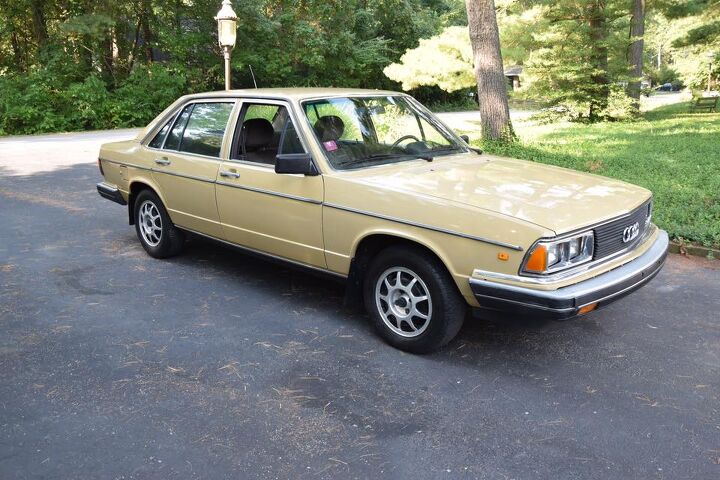






















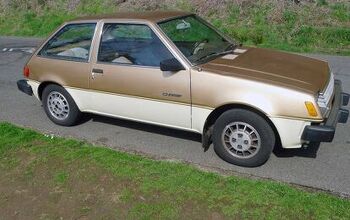

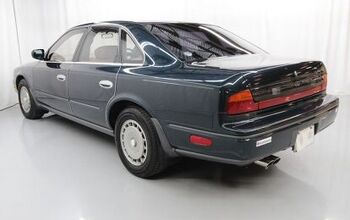
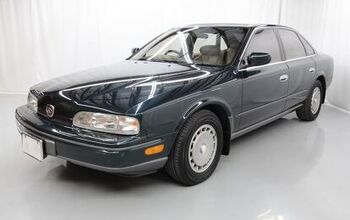
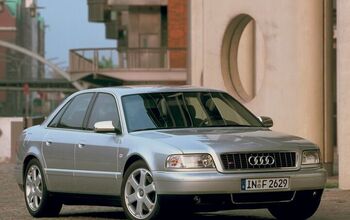








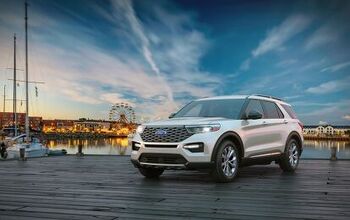

Comments
Join the conversation
these were nice cars 'during the day'. Kinda slow for all that dough. The turbo was credible--but it was overpriced for what it was (in 1980-81). Still, even at 4000 rpm, the car was smooth and quiet at 80. Door handles? I've had several VWs, no problem. But here's my issue with Audis in general: why are there used 1977-95 Audis so rare? Because owners love them? Probably not. Because owners didn't like them, or they were not worth fixing, or lemons? PROBABLY. More of these were sold than Rabbit GTIs. Yet I can find used Rabbit GTIs
I owned one. Not a world class car, more of a bigger Volkswagen. The silly 5 cylinder engine was just a 1.5l VW 4 with an extra cylinder added! Same cam, spacing, everything. Cheap ass crap! Still, I got on "huge" 215 width tires (front only), put shorter, cut down springs from a much heavier car in front, bolted the subframe directly to the car (it originally used rubber bushings), giving it some crazy cornering ability. Had no power though. It didn't help I was using Castrol 20w50 oil which eventually ruined the engine but I learned the hard way. Drove that thing in NYC, up and down the east coast, and then to San Francisco. Never let me down. It was wide enough to sleep across the back seat, almost comfortably! Bosch K Jetronic mechanical fuel injection was not responsive but was dead reliable. Unfortunately mine was an automatic. Never had any unusual issues with the door handles but I was the type that would be tightening things up or shimming something at the first sign something was loose. I know I had them off at some point. The color was "Dakota Beige". Great color. I was spraying some repairs once and asked someone watching if they wanted a tan (answer: NO). I also removed all the stupid black trim strips and filled the holes, giving it really clean custom look, plus mine was a 79 and it had the 4 round headlights with the weird silver plastic trim, which was really strange and unique and I liked it. Blacked out windows in back, sunroof (sometimes would drive through the park with someone standing up through the roof like a staff car!), had a lot of fun with that thing. If I took the front wheel of my mountain bike it would easily fit in the trunk! So much room in that thing. It was great in many ways.